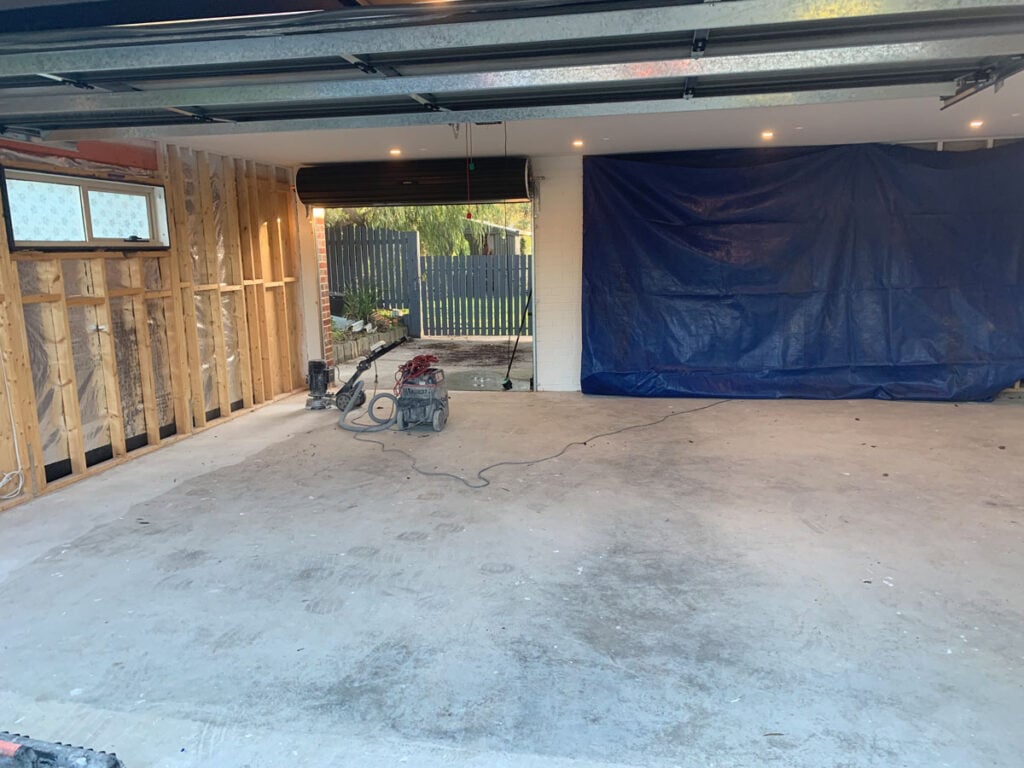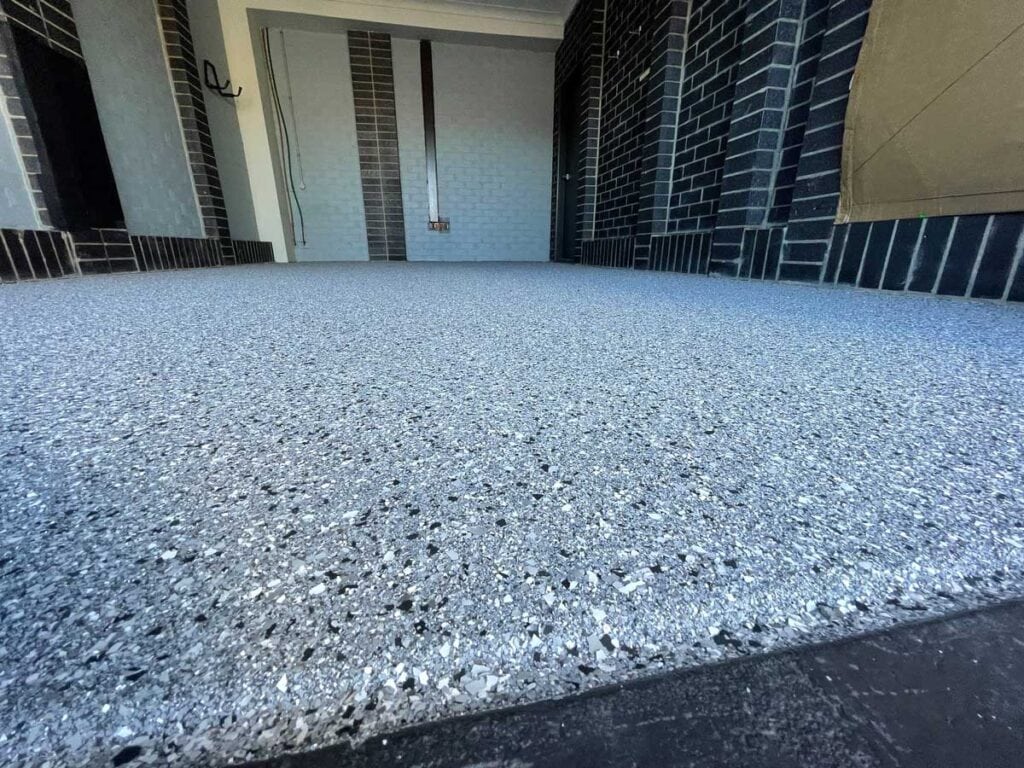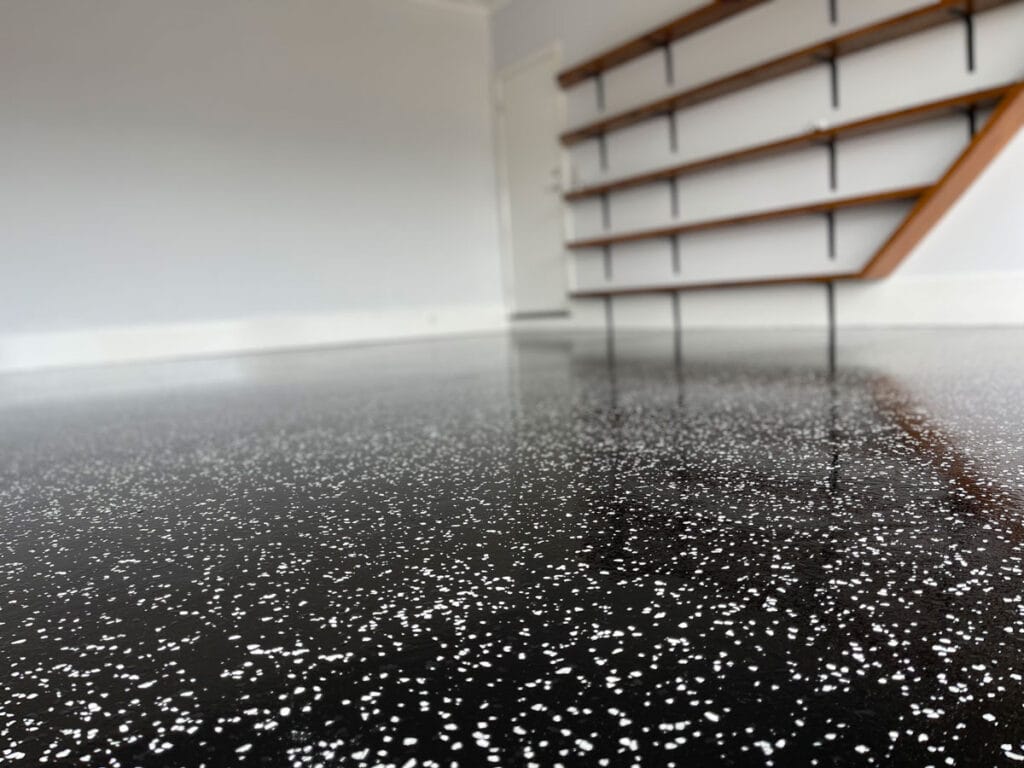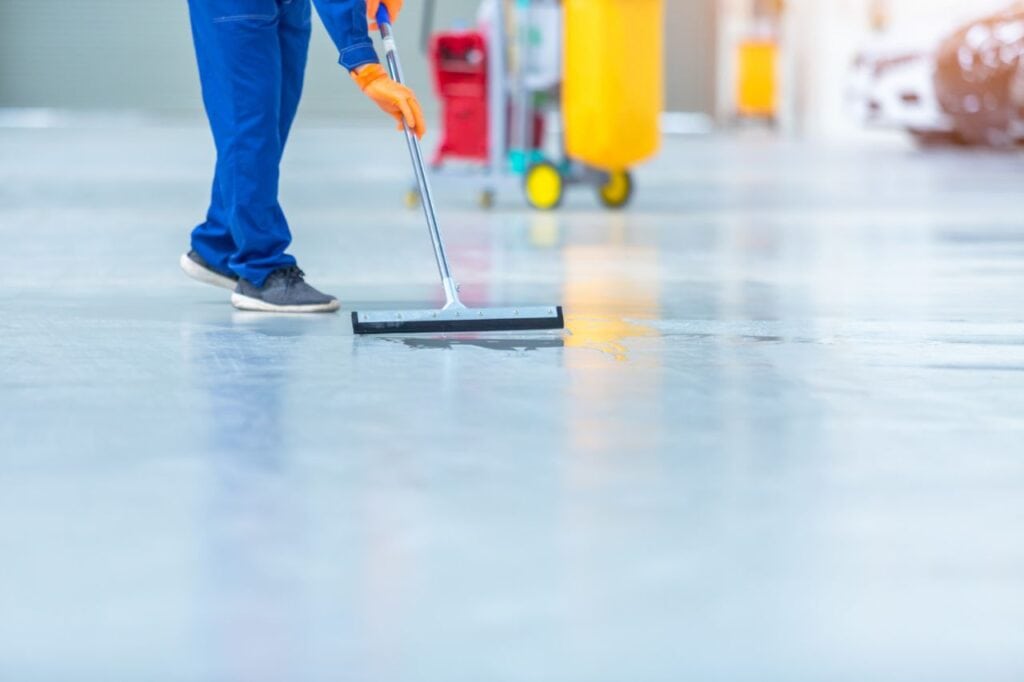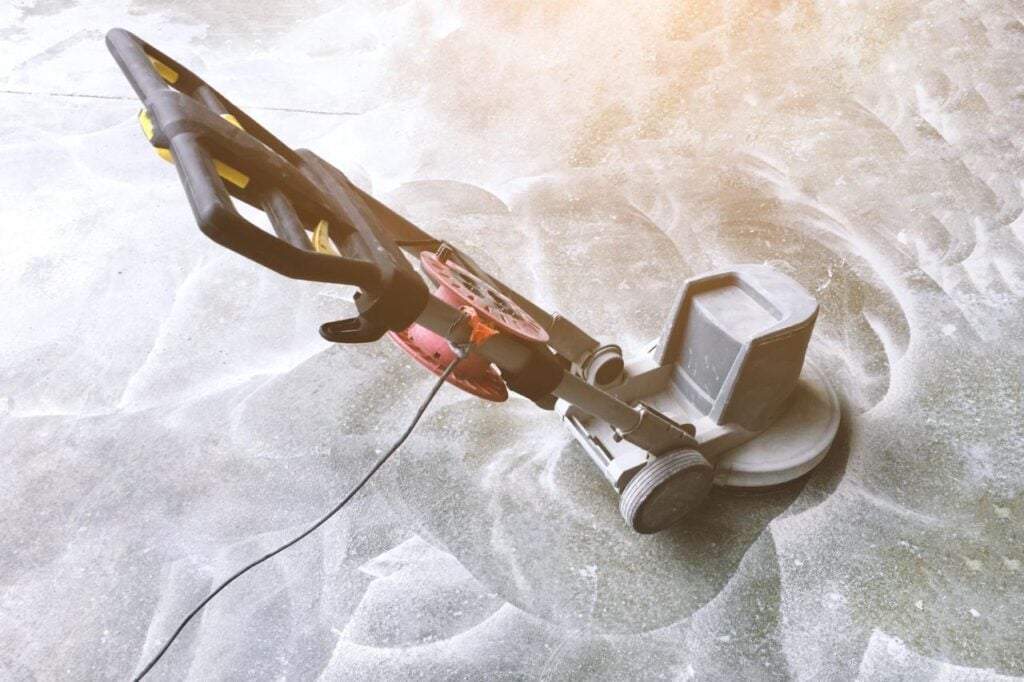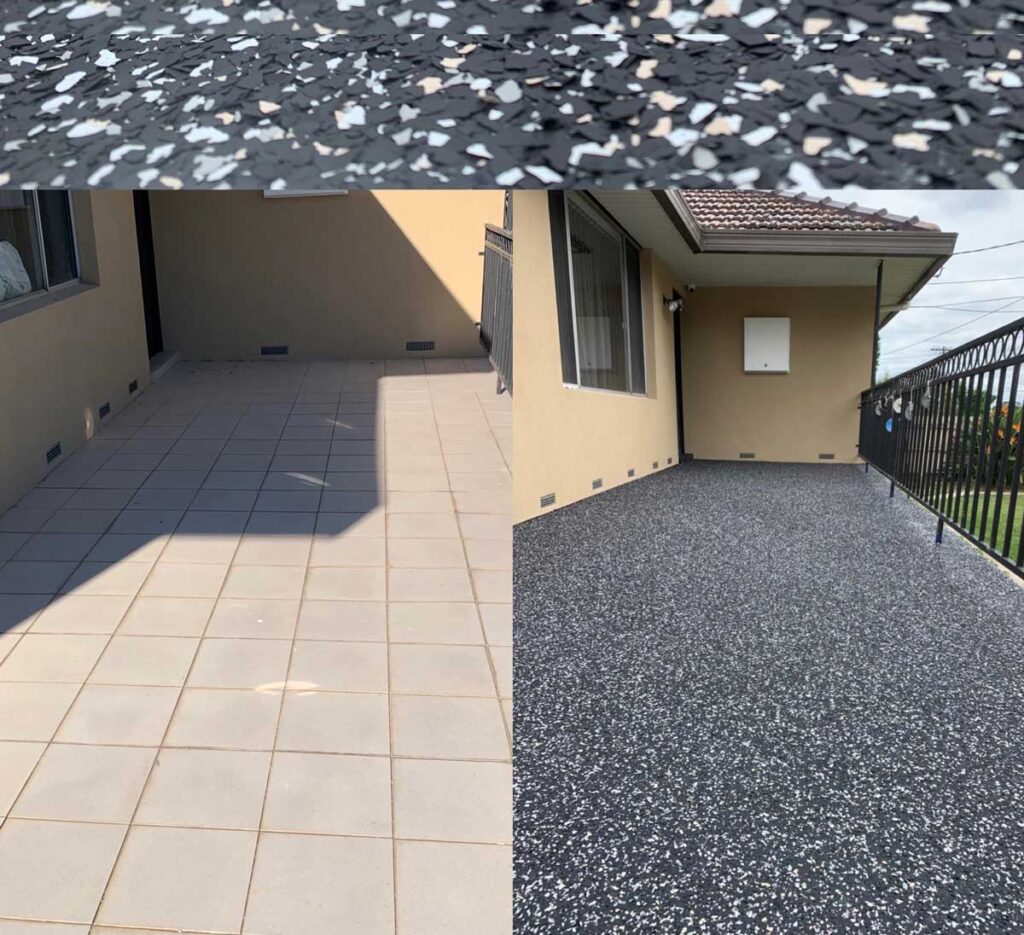Cement is a component of the concrete that is utilized in the construction of surfaces for patios, walkways, and driveways. Although the stains left by leaves on concrete may not last forever, removing them might be challenging.
The same chemical compounds that give the leaves their color also have the ability to stain concrete surfaces. The removal of fresh stains is much simpler than the removal of older stains.
Powdered detergents that contain cleaning agents have abrasive capabilities that remove stains effectively, as stated by Concrete Network. These qualities contribute to the detergent's ability to clean concrete surfaces. Examine the labels of cleaning products to find those that can help remove stains, such as those caused by food, blood, or plant matter.
What Is Concrete?
Concrete is among the commodities that are used the most all over the world. It is utilized in the construction of many different items, including garage floors, highways, residences, and paths. Cement, Concrete & Aggregates Australia (CCAA) estimates that around 70 percent of the world's population resides in buildings that are made of concrete. Concrete is a multipurpose building material that stands out due to its exceptional formability in terms of shaping, molding, and sculpting.
Concrete is not only resistant to fire, but also inexpensive in comparison to other building materials, and it can be molded into anything from enormous structures to small containers and even footsteps.
Because it requires maintenance, even though it is extremely robust and long-lasting, it might be considered a material with a long lifespan.
In order to effectively clean a concrete garage floor or remove stains from concrete, we first need to have a fundamental understanding of what a slab is and how it is produced. Concrete, which has been utilized throughout history by civilizations such as the Egyptians, Romans, and Ancient Chinese, has evolved and grown into one of the most common building materials in the world. The following are the basic components of concrete:
- Gravel (Coarse Aggregate)
- Cement
- Sand (Fine Aggregate)
- Water (H2O)
FAQs On How To Remove Leaf Stains From A Concrete Garage Floor
Do Leaves Permanently Stain Concrete?
The removal of leaf stains from concrete is not usually an easy task; nevertheless, there is no need to freak out because these stains do not remain permanently. Because the sun has a bleaching effect, there are certain instances in which the stain will just disappear on its own. Organic pigments can become trapped among the micropores and microscopic porous spaces that are present in concrete.
How Do You Remove Leaf Stains?
You might also try using a solution of dishwashing liquid or laundry detergent diluted in water. After allowing the mixture to lie on the surface for ten to fifteen minutes, scrub it into the ground using a brush that is relatively firm. One more gentle method for eliminating stains is to use a combination of one cup of ammonia and one gallon of water.
Does White Vinegar Clean Concrete?
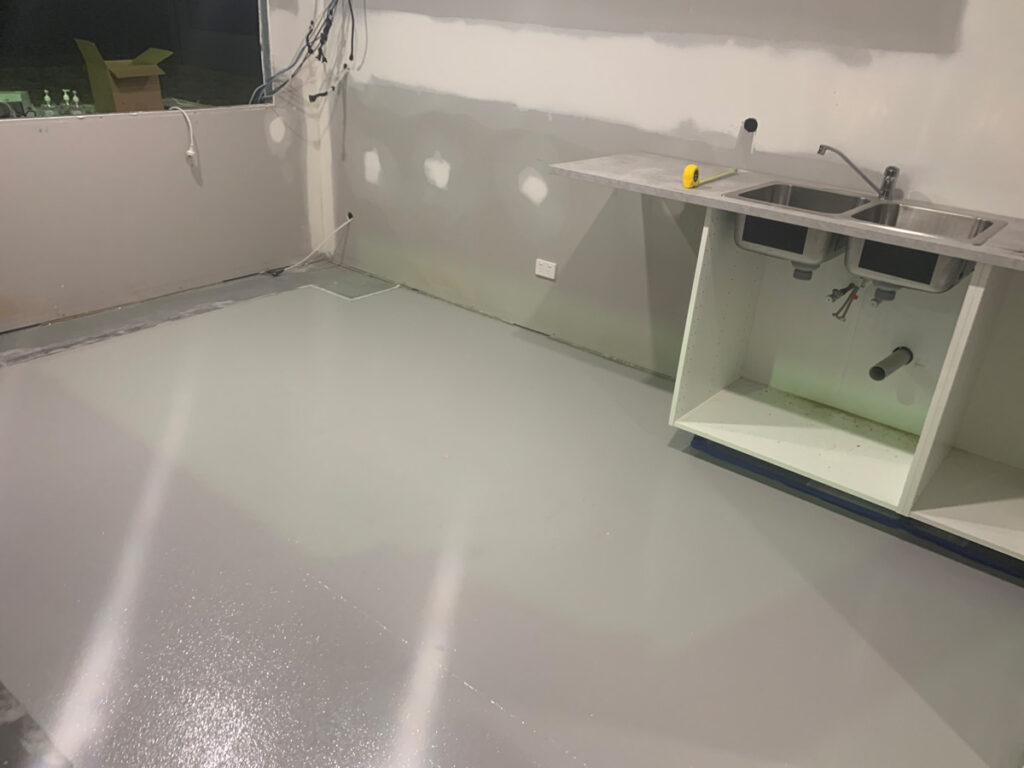
If you are searching for a natural cleaner, one option you should consider is washing concrete with vinegar or baking soda. Washing concrete with bleaching or detergent may be an effective method, but it may also be harmful to any plants that come into contact with it. Spray the liquid onto the concrete surface, then wait approximately half an hour for it to settle. The concrete should then be scrubbed and rinsed.
How Do You Remove Black Leaf Stains From Concrete?
- To remove any solid leaf material or debris from the concrete, use a power washer to clean the surface.
- When the concrete is still wet, use an organic detergent as the one suggested up top. Just give it a few minutes to settle down.
- Scrub the area thoroughly with a brush or broom with a lot of bristles.
- Remove all traces of soap from the concrete by rinsing it well with water.
Can You Use Bleach To Clean Garage Floor?
In a plastic bucket or container, add one gallon of water and one-half cup of Clorox® Regular-Bleach2 with CLOROMAX®. Stir the mixture well. On horizontal surfaces, apply the cleaning solution using only a brush or broom, and on vertical surfaces, apply the solution using a sponge or mop. Surfaces that are heavily filthy can call for additional scrubbing. Hold off on the disinfection for five minutes.
How To Clean Concrete Garage Floors
Words such as "power washer," "floor machine cleaner," and "floor scrubber" are frequently used in conversations about cleaning concrete floors, and you may hear these terms a lot if you listen to enough of these conversations. All of these pieces of machinery are specialized tools that are utilized in the cleaning of concrete and cement floors. The question that needs to be asked now is whether or not you need any specialized tools to wash YOUR concrete slab.
If you are dealing with a concrete floor that is heavily soiled, it is best to hire an experienced deep cleaning that will use sophisticated instruments to get the job done. If, on the other hand, you are working with a surface that is not excessively filthy, it is possible for you to scrub the surface yourself if you have the appropriate equipment and are willing to put in some effort.
On the other hand, ordinary cleaning of concrete and the removal of stains from concrete are both simple tasks that only require a few fundamental cleaning tools and supplies. We are going to provide you with all of the knowledge that you require in order to learn how to clean concrete floors without the use of any specialized tools in this article.
What To Use To Clean Concrete Flooring?
It is crucial to determine what type of finish your concrete floor has before attempting to clean it. This will allow you to select the appropriate cleaning solutions and equipment for the task at hand.
In general, concrete that has been waxed or sealed needs to be cleaned with a pH-neutral cleanser that is formulated to remove stains from concrete and give it a revitalized appearance.
If the concrete is not properly protected, harsh cleaning chemicals or products like vinegar, lemon extract, ammonia, and bleach can cause damage to the surface of the concrete and should be avoided at all costs.
When it comes to the equipment needed for cleaning concrete floors, brooms, dust mops, and vacuum cleaners that come equipped with a brush connection are all viable options.
In today's world, the vast majority of concrete floors in commercial and residential premises are either sealed or waxed. However, if you are interested in cleaning unfinished concrete, we offer solutions for both types of concrete!
Cleaning Method For Sealed Concrete Floors
One of the most challenging aspects of cleaning concrete (both completed and unfinished) is the fact that, similar to grout lines, gaps and saw cuts have a tendency to accumulate dirt and germs, both of which may make the surface appear very unattractive.
As a result, it is essential to conduct a thorough search of the floor for any such dirt lines and, if any are discovered, to manually clean them. This step can be performed either before or after the rest of the floor has been cleaned; however, it is generally recommended to be performed after the rest of the floor has been cleaned because some of the dirt may be removed while clearing and mopping the surface as part of your routine cleaning routine.
After that, it will be much simpler to spot wash these fine lines thanks to this. When cleaning saw cuts and cracks in concrete floors, it is recommended to make use of an old toothbrush with soft bristles and a gentle cleanser.
To eliminate grime and stains from the remaining portion of your sealed concrete slab, you can accomplish a comprehensive cleaning by following the methods outlined below.
- To begin, clear the area of dust and debris using either a static broom or a microfiber dust mop. It is recommended that you utilize these particular kinds of cleaning instruments due to the number of effects they have in collecting dust. A vacuum cleaner is another good option; however, it is not recommended if you do not have an acceptable brush attachment that has bristles that are long enough to cover the metal object or beater bar of the vacuum cleaner, as this can leave scrapes on the finish of your concrete floor. If you do have such an attachment, you should use it.
- Even when using a cleanser with no effect on pH, it is best to minimize the amount of moisture that is present on the floor. Use a microfiber mop with water and a light cleaning solution to maintain your concrete floors on a weekly basis. A flat-head microfiber mop is recommended for this task. In the event that your flooring becomes lightly dirty on a daily basis, first, remove dust and debris, and then use a damp mop to spot clean any stains or blemishes. This will ensure that your concrete remains clean and presentable.
- To bring back the shine that has been worn away on your stained or shined concrete floor, you will need to give it a light buffing once a month or as needed. Depending on the kind of finish you already have, you should use a product that is available for purchase for this purpose.
Cleaning Method For Unfinished Concrete Floors
A lot of homeowners don't pay enough attention to the unfinished concrete that surrounds their property until it becomes significantly dirty from pedestrians and exposure to the elements in the environment. In the instance of a garage, you may also have some oil stains and messy tire tracks that should be cleaned up. Those are two examples of things that need to be cleared away.
However, before we start the process of cleaning unfinished concrete slabs, it is important to note that the processes for normal cleaning and well before cleaning are distinct from one another.
Therefore, it is recommended that you perform a more in-depth cleaning before you seal the floor, wax the floor, or polish the floor.
In the event that your incomplete concrete flooring is in need of routine cleaning, the following steps are what you should take:
- Use a broom made of hard or semi-hard straw to sweep the floor, and then collect the dust and debris in a dustpan. If you are dealing with material that is somewhat small, you may want to consider using a pressure washer to get rid of the dirt on the surface and then washing it down afterward. If this is the case, you may need to consider using a leaf blower. Simply doing this will result in a much cleaner appearance for your unfinished concrete.
- To remove stains from unfinished concrete, you should begin by using a gentle cleaning agent, such as a product with a pH that is neutral, and a scrub brush that does not have wires in it. After applying the cleaner and scrubbing in a circular motion, the soiled area should be wet. Before making any observations, make sure the floor has had ample time to dry completely, and then, if necessary, proceed to the next stage.
- If a stain has been allowed the necessary amount of time to set in, it may be necessary to use a specialized stain remover like bleach or degreaser.
The Difference Between Concrete & Cement
Concrete and cement are terms that are frequently used interchangeably, leading to confusion between the two. Cement is a fine grey powder that is an essential component in the production of concrete. The most common type of cement used for construction is known as Portland cement. In its most basic form, it is a mixture of chalk and limestone that has been heated to a temperature of around 1,500 degrees Celsius while being calcined in a kiln. After that, it is reduced to a powdery form by grinding.
Hydration is the name of the chemical process that takes place when water is applied to this powder; this reaction causes the powder to turn into a solid after being dried. Many people wonder if water and cement can harden anything, and what the purpose of adding an aggregate (either fine or coarse) is.
Because it acts as a binder that keeps the other materials together, the presence of an aggregate is necessary for the production and durability of concrete. The process of developing a formula for concrete is not as straightforward as simply combining sand, concrete, and water.
Mix design is a term used in the engineering and scientific communities to describe a technique that is used to create an extremely sophisticated mixture. It is essential to keep in mind that there is more going on beneath the surface of concrete than meets the eye. Because concrete is a one-of-a-kind substance, cleaning it requires special attention and caution.
Regular Cleaning & Upkeep Of Concrete
Maintaining a regular sweeping routine in your garage can make it much simpler to clean the floor when you do it frequently and thoroughly. Dust, grass clippings, and leaves are all examples of things that can rapidly accumulate. If you have a large garage, purchasing a large "Shop Broom" could prove to be a wise investment for you. It is of the utmost importance to keep up with the regular care of your concrete basement floor because doing so will enable you to expose stains caused by oil, rust, and grease earlier rather than later.
Deep Clean Of Concrete Floors
It's possible that every once in a while you'll require a more in-depth cleaning. This may be accomplished quickly and effectively by utilizing a concrete cleaner that is potent enough to provide it with a decent, thorough cleaning while still being lightweight enough that it won't take several hours to do.
Getting this done is an easy and straightforward process. To get started, sweep the surface area and clean up any piles of grass clippings, dead insects, leaves, or other trash that may have accumulated.
As soon as this step has been completed, you are free to choose a cleaning solution, moisten the floor with a pail of water or the hose, and then apply the solution. At this point, it is essential that you continue to keep the floor wet in order to prevent any substance from drying and leaving behind residue.
After you have spread the product evenly throughout the floor, you may scrub it using either a firm brush or a scrubbing brush depending on your preference.
It is okay to use an excessive amount of the product if the soil is very poor quality; you should not be frightened to do so. Scrub once more for an even more thorough cleaning once you've already done so. After this has been completed, you can give the area a thorough rinsing with water and then allow it to dry to reveal a garage floor that is clean and free of any filth.
Targeting Oil & Grease Stains
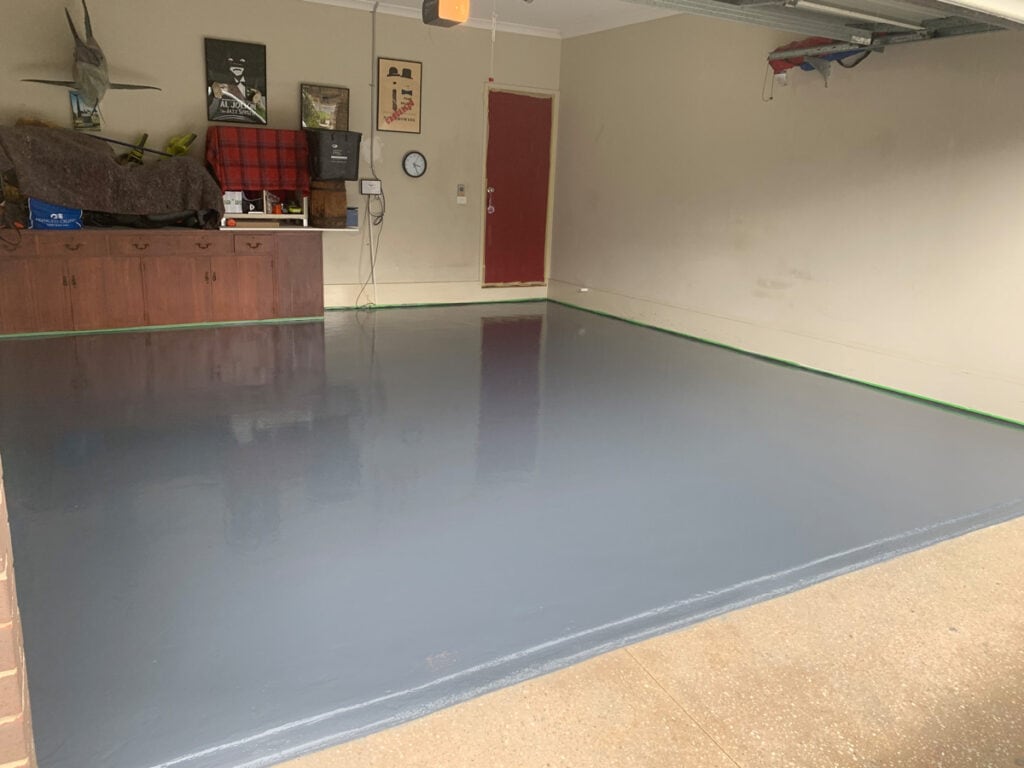
There is a chance that your garage will become stained with oil and grease at some point, particularly if you park your vehicle, maintain your lawn mower, or ride your motorcycle there.
The stains caused by oil and grease need to be cleaned, and doing so will prevent possible transfer onto footwear and clothing into the home. Additionally, doing so will help reduce the risk of harm caused by slipping, which is especially important if the garage floor is repainted.
In order to remove oil and grease stains, you will need a specialized product that has been created especially for concrete floors and roads. You will need a product that has been designed primarily for oil spills and lubricates, such as the JAMAC Concrete Cleaner, which, in addition to being very powerful at removing dirt, has also been specifically formulated to eliminate grease and oil spills. If you want to clean up oil spills and grease spills, you will need something like this.
The JAMAC Concrete Cleaner is available in an easy-to-use powder form; simply wet the surface that needs to be cleaned, sprinkles the product over the contaminated area, scrub it in with a brush, and then rinse it off with water. This product performs admirably on uncoated, coated, and painted concrete in equal measure. It does wonder not only for garage floors but also for driveways and any other outdoor concrete surface you can think of.
How To Remove Common Concrete Stains With These Tips
Concrete patios and roads are well-known for their resistance to wear and tear due to the material's durability. Unfortunately, despite the fact that these floorings have a long lifespan, this does not mean that they are stain-proof. Concrete surfaces will inevitably become discolored over time due to the accumulation of a wide variety of imperfections, including car oil stains, rust stains, foliage stains, and so on. The good news is that you can get away with these stains using a little bit of hard work and a few pointers that will come in handy. These tried-and-true solutions will help erase those unattractive splotches and recover the appearance of your patio or driveway if you find yourself struggling with tenacious concrete stains.
Removing Paint Stains
Even though cleaning paint stains can be extremely difficult, the last thing you need to do is let the paint dry and then clean up the colorful mess that it leaves behind on the concrete. Before applying a solution consisting of trisodium phosphate (TSP) and one gallon of warm water to the imperfection, put on a pair of latex gloves and eye protection. Before using a vigorous scrubbing motion with a stiff nylon brush, the solution should be allowed to sit for at least half an hour. After that, use a power washer to give it another rinse until all of the paint has been removed.
In order to remove previous paint stains, you will need to make use of a paint remover chemical. Glasses, chemical-resistant gloves, a face mask, or a respirator need to be used when performing this task. If you have only a little expertise with paint strippers, it is highly recommended that you get in touch with a professional to remove dehydrated paint stains. This is the procedure that is both the safest and most successful of all the options available.
Removing Rust Stains
It's possible for your concrete flooring to take on an unsightly orange tint if you have rusty tools, plants, or outdoor furniture.
Vinegar can be used to remove rust stains that are relatively new provided that they are white vinegar. Simply pour the vinegar onto the imperfection, and then leave it there for ten to fifteen minutes to allow it to soak.
Scrubbing the stain with a nylon bristle brush of sufficient stiffness should cause it to come off gradually. After that, give it a rinse, and then continue doing what you were doing until the concrete is completely clean.
On older rust stains, utilizing white vinegar may not be as successful as using a commercial rust remover; therefore, your best bet is to use the latter. When working with powerful chemicals, it is imperative that you constantly safeguard your eyes and hands, therefore make sure that you are wearing protective eyewear and gloves.
After applying the liquid to the rust stain, you will need to wait for the fluid to take action; the length of time will depend on the directions provided by the manufacturer. After you've observed that the rust is beginning to flake off, use a power washer to remove the discoloration. Proceed with the process as many times as required.
Removing Foliage And Mud Stains
On a hard floor, it is not difficult to sweep away little traces of dirt; however, stains caused by mud or foliage may prove to be more difficult to remove. The good news is that these stains are considerably simpler to eliminate, and all you need is one cup of fluid dishwashing solution along with some warm water to do the trick. Place the solution in a spray bottle, and then apply it to the stains caused by the mud and the foliage. After that, get a nylon brush with a firm bristle and scrub the area until the stains have been removed. Last but not least, finish up by using a pressure hose to remove any lingering dirt, mud, or wet leaves that have fallen.
Removing Pet Stains
If your dog or cat has a habit of defecating or urinating on your concrete slabs, the stains will almost certainly have an offensive odor as well. However, if you want to be prepared for the potentially unpleasant experience of cleaning up the mess, you should put on a face mask. In most cases, all that is required to clean pet urine is a solution consisting of baking soda and water. After combining both of the components in a box, pour the resulting solution onto the stain, and then scrub the area with a nylon brush.
Conclusion
Concrete flooring is very easy to keep clean and in good condition. Your flooring should continue to seem clean for a very long time as long as you are familiar with the proper techniques for removing various types of stains.
Mix a half-cup baking soda in a gallon of warm water and use it as an all-purpose cleaner. You can also mix baking soda with a few drops of liquid soap, to make a paste, and use it to scrub light stains. Don't underestimate the power of warm, soapy water to keep your floors clean and remove minor stains.
Mix 1 cup of bleach with 2 gallons of water in a bucket to remove stubborn leaf marks. Apply the mixture to the concrete and let it sit without drying for five minutes. Scrub the stain vigorously with the brush and rinse off the bleach mixture with a power washer.
